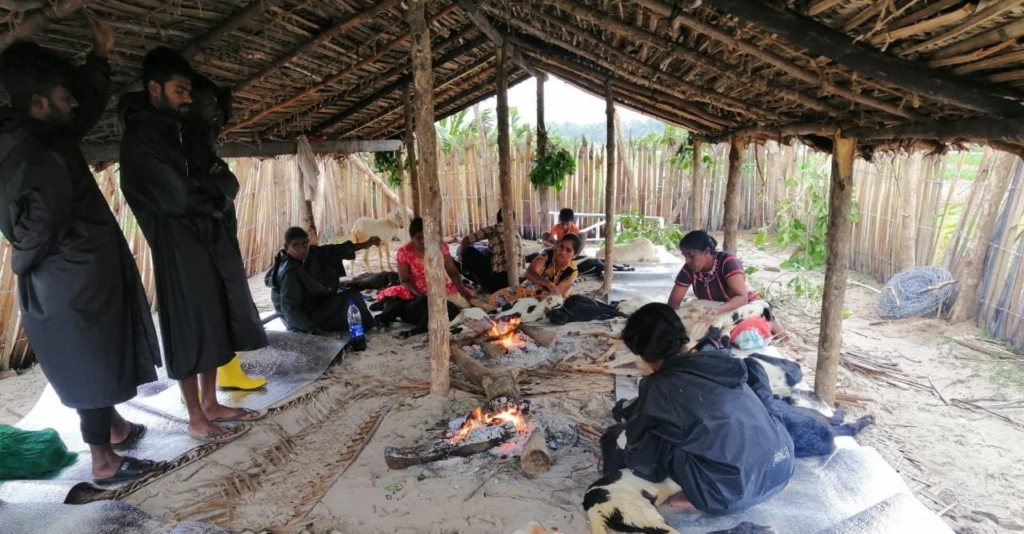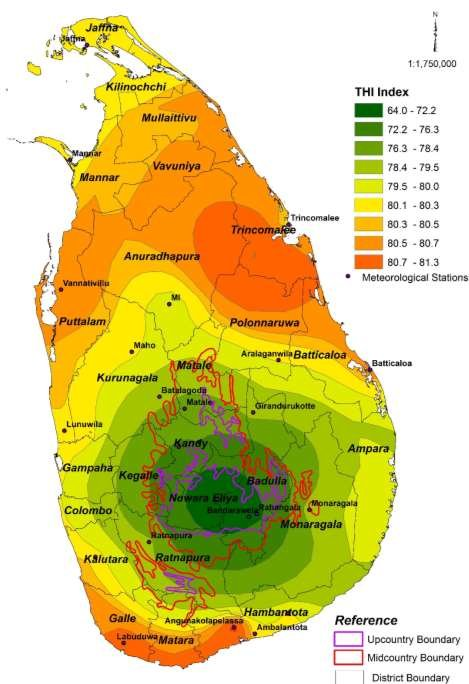Physical Address
23,24,25 & 26, 2nd Floor, Software Technology Park India, Opp: Garware Stadium,MIDC, Chikalthana, Aurangabad, Maharashtra – 431001 India
Physical Address
23,24,25 & 26, 2nd Floor, Software Technology Park India, Opp: Garware Stadium,MIDC, Chikalthana, Aurangabad, Maharashtra – 431001 India

“We were trembling that day and could not reach our home. This is because it was so cold and raining. During that time, two dead cows fell in the pasture land” An owner of dead cows from Batticaloa mentioned their experience.
On the 8th and 9th of December 2021, the storm “Mandous” brewed in the Bay of Bengal, causing sudden changes in the weather condition of Sri Lanka. Although it caused inclement weather across Sri Lanka, its intensity was more significant in the Eastern and Northern parts of Sri Lanka. It was recorded that the temperature of northern and eastern Sri Lanka during those days was 17-20 degrees Celsius. Additionally, most livestock deaths were reported in the Northern and Eastern provinces of Sri Lanka during the said days.
Total Death of Cattle
A total of 1,660 cattle died in the eastern and northern provinces due to cold weather, the Livestock Division of the Agriculture Ministry stated.
987 livestock deaths, including 691 cows and 296 goats, were reported in the northern provinces. Similarly, a total of 663 deaths, including 555 cows and 108 goats, were recorded in Eastern Province. It should be noted that all these are based on the owners’ records. It is also worth noting that some owners do not register the deaths of their cattle. Moreover, 329 cattle were found sick in the Northern Province and 16 cows in the Eastern Province.

Fig 01. People warming sick cows to keep them warm
Age-based analysis of the dead Cattle
Details of dead cattle in the Batticaloa district

This table shows the number of dead cattle in Batticaloa District. Based on that, out of the total 309 cattle deaths,
No.of dairy cow adults -133
No.of dairy cow calves – 119
No.of buffalo adults – 16
No.of buffalo calves – 3
No.of goat adults – 31
No.of kids – 7
How Environmental factors affected cattle
Temperature
All livestock are homeotherms, meaning they maintain relatively constant internal body temperatures, usually within a 1 to 2° C range. Generally, the body temperature of most domestic animals is considerably higher than the environmental temperature to which they are exposed. They maintain their body temperatures by balancing internal heat production and heat loss to the environment.
Ordinary Body Temperatures of livestock:
Cow – 37.8-39.2°Celsius
Buffalo – 37.5 – 39.0°Celsius
Goats – 39° to 40°Celsius
Every animal has a Thermal neutral zone. Accordingly, endothermic organisms known as homeotherms maintain internal temperatures with minimal metabolic regulation within ambient temperatures called the thermal neutral zone. At the lower end of this range, normal metabolic processes supply enough heat to maintain the body’s core temperature. However, there is a lower critical temperature zone below the thermal neutral zone. The lower critical temperature is the ability of cattle to withstand cold conditions. The research says the lower critical temperature for cattle is between 150C and 250C.
In cases below the lower critical temperature, cattle suffer from respiratory problems, and heart rate drops, leading to the animal losing consciousness and ultimate death.
Relative Humidity
Relative humidity measures how much water vapour is in a water-air mixture compared to the maximum amount possible.
In cattle, low humidity in the air will irritate the mucous membranes, while too high moisture may promote the growth of fungus infections.
We can consider that these two factors may have affected the cattle causing their deaths.
What is the Temperature humidity index (THI)?
Temperature humidity index is an index used to determine the effect of summer on animal and human comfort, combining temperature and humidity.

The above map data shows the THI variance in Sri Lanka, where the Northern and Eastern provinces belong to the dry zone of Sri Lanka.
LOCAL ZEBU cattle are primarily raised in the dry areas of the country. As for their THI scores, it ranges from 80.1 to 81.3. Accordingly, there is comfort for the cattle within this THI range.
During the storm, the temperature drops, causing a reduction in the standard THI value in the dry zone. Therefore livestock struggle with irregular homothermic activities within their body.
What did the lab results say?
Dr S. Vaseeharan, the Northern Provincial Director of the Department of Animal Production and Health in Jaffna, analysed the dead livestock’s postmortem. He said that upon extensive testing and laboratory examinations, no diseases had been discovered, no other illnesses or communicable infections, and only the cold shock was to blame for the deaths. Additionally, Dr Vaseeharan stated that animals are typically not so vulnerable to a cold shock unless they are malnourished.
He also mentioned that it is similar to the subcutaneous fat layer in every healthy person. Animals in good health have a fat layer that will dissolve without food or water for a prolonged period. He did not observe this fat layer in the dead cattle, suggesting that these animals were malnourished. Finally, he highlighted that these animals are not dairy breeds; in some cases, the milk produced by these cattle is insufficient to feed the calves.
Additionally, the Eastern Provincial Director of the Department of Animal Production and Health, Dr M. A. M. Fazi, confirmed that the cold wave and cold stock are the reason for the cattle deaths.
He added, “this is the paddy farming season, and these animals are looking for food in the forests and protected areas.” he claimed that this led to the malnourishment of the livestock, which made them vulnerable to the cold shock.
Cattle grazing within protected areas is an island-wide problem, although it is illegal in the Flora and Fauna Protection Ordinance (Amendment) Act no. 22 of 2009. This has caused the malnourishment of domestic livestock and created competition within protected areas for limited food supply.
What the cattle farmers had to say.

We spoke to Mr S Sithambarapillai and Mr K Chandrakumar, two farmers who experienced the loss. “That morning, we herded the cows to the pasture as usual. The rain and wind were quite heavy. The cows did not graze that day. While dragging the cows back to the farm, several cattle fell in the pasture. We carried them to the farm and warmed them up by lighting a fire. The cattle slightly recovered after that. The next day, early in the morning, the cattle were found dead on the farm when we woke up.”
“All our dead cows showed similar symptoms. Of course, our cows have been dying due to various diseases before. But this is the first time in my experience that cattle died of cold.” They added.
Regardless of the cause of death, improper management of cattle is a leading reason for this predicament. Further, Dr Vaseeharan claimed that since some of the northern province’s cattle are reared for slaughter, these animals still need to be insured.
Accordingly, these areas do not protect livestock against such natural disasters. Additionally, there are 300 to 400 animals in a herd owned by farmers and led astray so they can graze on open ground. Further, due to these unexpected deaths, animal owners have lost more than Rs 500 million in Sri Lanka.
(with inputs from Dinesh Balasri )
Comments are closed.
Do you have a spam issue on this blog; I also am a blogger, and I was curious about your situation; we have developed some nice procedures and we are looking to trade methods with others, why not shoot me an email if interested.